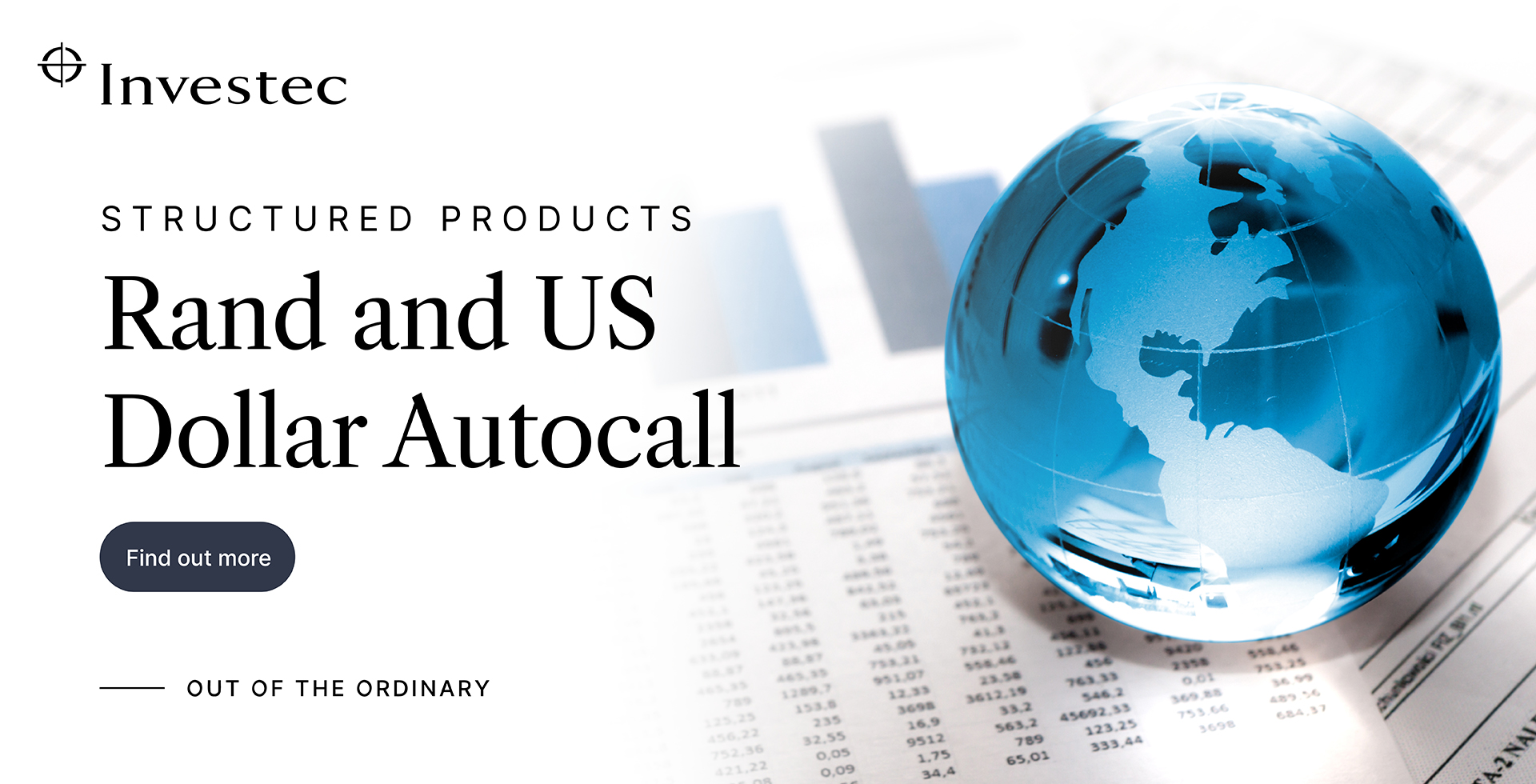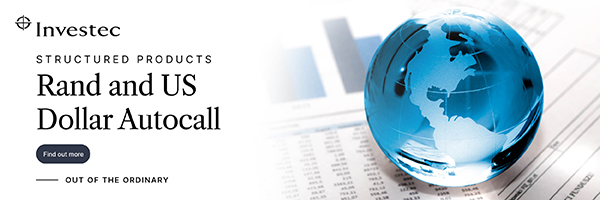Investors tend to pay a lot of attention to the US equity market but often overlook opportunities in other leading developed market indices. Two such markets, Europe and Japan, form the underpin of Investec’s latest two structured products, in autocall form, on the Nikkei 225 and the Euro Stoxx 50. In this podcast, Andri Joubert of the Investec’s Structured Products team chats to The Finance Ghost about the key features of the two autocalls with a five year-tenor:
>
The first is a rand-denominated autocall that is linked to the Nikkei 225. The product has opportunities to call on each anniversary if the index growth is flat or positive at one of the call dates. It provides a return of 17% (in Rand) for each year from inception to the call date. For example, if the index growth is flat or positive at the end of year two, then the product will mature and return 34%.
The second is a US dollar-denominated autocall linked to the Euro Stoxx 50 index which comprises the 50 largest European companies. A return of 10.25% (in US dollars) is paid for each year since inception with opportunities to call at the end of year 3, 4 and 5 if the index growth is flat or positive at one of the call dates.
Both products offer capital protection of the initial investment amount, provided the index does not decrease by more than 30%. Thereafter, the investor is exposed to the market’s return.
Why the Nikkei 225?
There has been a reversal of sentiment towards the Japanese stock market in recent years and the market’s performance demonstrates the increased investor confidence. The Nikkei 225 is weighted towards the technology sector, particularly hardware and semiconductor manufacturing, which is well positioned to benefit for the global surge in artificial intelligence. The Japanese government and the Bank of Japan have implemented various economic reforms and maintained accommodative monetary policies. These include stimulus packages aimed at boosting consumer spending and corporate investment, which have bolstered market confidence and economic activity. Japanese companies have over the last few years gone through a process of transformation, with improvements in capital efficiency and corporate governance at their core.
Why the Euro Stoxx 50?
Europe has traditionally lagged the US, but recent moves by the European Central Bank to start cutting rates should provide a boost to growth, especially if inflation continues to moderate.
Globally, stock market valuations appear stretched, particularly in the U.S. For instance, we can look at the S&P 500 current Price to Earnings (“PE”) ratio of 26.1 vs the 20-year average of 18.5. The Eurozone stands out as one of the few regional markets where valuations are below long term historic value. Euro Stoxx 50 is currently trading at a PE ratio of 13.8 vs the 20-year average of 14.3. The banking and industrial sectors, which constitute a significant portion of the Euro Stoxx 50 Index, appear particularly attractive on this basis. Additionally, the rise in dividend payouts and share buy-backs by European companies are expected to provide an underpin for companies that make up the index
What else do I need to know about the two structured products?
The products are issued by Investec Bank Limited. Investors also have credit risk exposure to Bank of America for the Euro Stoxx 50 product only.
The minimum investment for the Nikkei 225 product is R100,000 and the Euro Stoxx 50 product is $6,000. Investors can invest through their stockbroking account or their financial advisor. Applications close on 8 August 2024 for both products.
For more information, visit the Investec website here.
Disclaimer available here.




